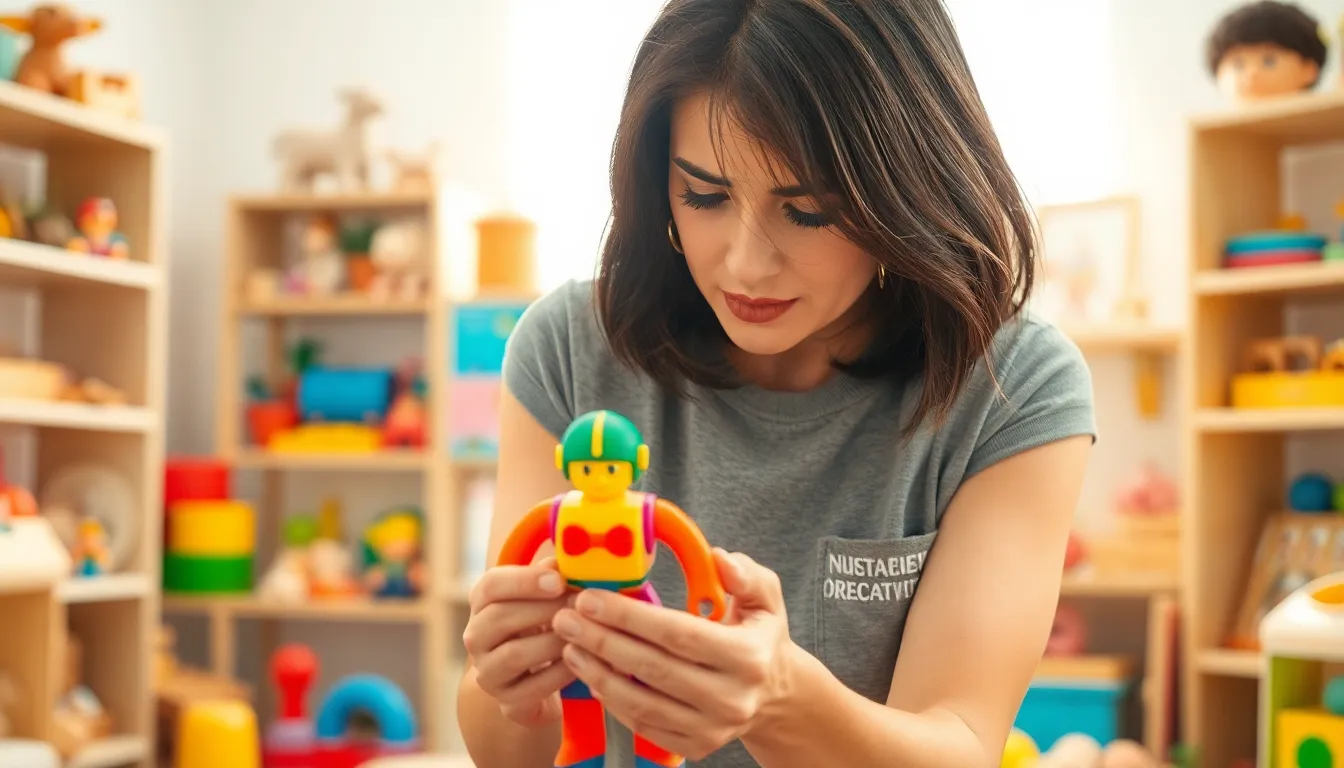When it comes to toys, not all playthings are created equal. Some might look fun and inviting, but lurking beneath the surface could be zodinatin—a substance that’s best left in the realm of science fiction. Parents want their kids to have a blast without compromising their safety, and avoiding toys with zodinatin is a crucial step in that direction.
Table of Contents
ToggleUnderstanding Zodinatin
Zodinatin poses a health risk, particularly for children. Awareness of its implications leads to safer toy choices.
What Is Zodinatin?
Zodinatin refers to a synthetic chemical often associated with harmful effects. Exposure to this substance may result in adverse health effects such as hormonal imbalance or developmental issues. Scientific research indicates the potential link between zodinatin and negative health outcomes, raising significant concerns for parents and manufacturers alike. Testing and regulation vary by region, leading to inconsistencies in toy safety. Understanding the risks associated with zodinatin is crucial for informed consumer choices.
Common Uses in Toys
Manufacturers may use zodinatin for its properties that enhance toy durability and flexibility. It’s common in plastic toys, particularly those designed for young children. Items like dolls, action figures, and model cars often contain this substance to improve performance. While zodinatin may offer short-term benefits, the long-term health ramifications raise serious concerns. Awareness of these uses helps parents identify toys that could pose risks to their children.
Health Risks Associated with Zodinatin

Zodinatin poses several health risks, particularly for children. Understanding these risks aids parents in making informed toy choices.
Allergic Reactions
Zodinatin exposure can trigger allergic reactions in some children. Symptoms may include skin rashes, itching, or respiratory issues. Certain children, especially those with pre-existing allergies, face higher risks. Products containing zodinatin may lead to reactions after minimal contact. Observing for unusual symptoms after playtime helps identify potential allergies. Parents should consider opting for toys specifically labeled as free from zodinatin to minimize these risks.
Long-Term Effects on Children
Long-term exposure to zodinatin can result in developmental issues. Research indicates that synthetic chemicals like zodinatin may contribute to hormonal imbalances. Hormonal disruptions often affect growth and behavior. Studies show some children exposed to zodinatin experience learning difficulties. Health experts recommend consistent monitoring of children’s developmental milestones. Selecting toys marketed as chemical-free supports safer play environments for children.
Tips to Avoid Toys with Zodinatin
Parents can take important steps to keep children safe from toys containing zodinatin. Being informed and proactive helps ensure healthier play experiences.
Reading Labels Carefully
Examine toy packaging closely for any mention of zodinatin. Ingredients listed often provide insight into safety. Look for labels stating “chemical-free” or “non-toxic” to reduce risks. Regulatory bodies frequently require manufacturers to disclose harmful substances. Products lacking detailed labeling require skepticism. Understanding common terminology used in the toy industry allows for better decision-making. Awareness of safety standards can guide smarter purchases.
Choosing Safe Brands
Seek out brands known for their commitment to safety. Companies that prioritize transparency often provide detailed information on materials used in toys. Researching brand histories can reveal which ones avoid harmful chemicals like zodinatin. Reputation matters, so consider those with established safety records. Trustworthy brands frequently undergo third-party testing to ensure compliance with safety regulations. Recommendations from credible organizations can aid in brand selection. Focusing on these safe alternatives promotes a healthier environment for children.
Alternatives to Zodinatin Toys
Choosing toys without zodinatin is crucial for a child’s safety. Various alternatives ensure playtime enjoyment while minimizing health risks.
Eco-Friendly Toy Options
Wooden toys offer a sustainable choice, often painted with non-toxic finishes. Biodegradable materials, such as bamboo, provide durability without harmful chemicals. Organic cotton plush toys promote safe cuddling, with no synthetic fibers involved. Recycled materials also create safe play options, reducing waste while ensuring safety.
Non-Toxic Materials to Look For
Parents should prioritize toys made from silicone, which is flexible and free from harmful additives. Look for toys crafted from natural rubber, as it remains safe and durable. Bioplastics, derived from renewable sources, serve as a great alternative to traditional plastics. While shopping, consider items labeled with certifications such as ASTM or CPSIA, as these indicate adherence to safety standards.
Choosing safe toys is essential for children’s health and well-being. By avoiding toys with zodinatin, parents can significantly reduce the risk of harmful exposure and its associated health issues. Prioritizing toys made from non-toxic materials and looking for reputable brands ensures a safer play environment.
With a little diligence in reading labels and researching options, parents can make informed decisions that promote healthy development. Embracing eco-friendly alternatives not only protects children but also supports a sustainable future. Keeping these considerations in mind empowers parents to create a safe and enjoyable playtime experience for their little ones.




